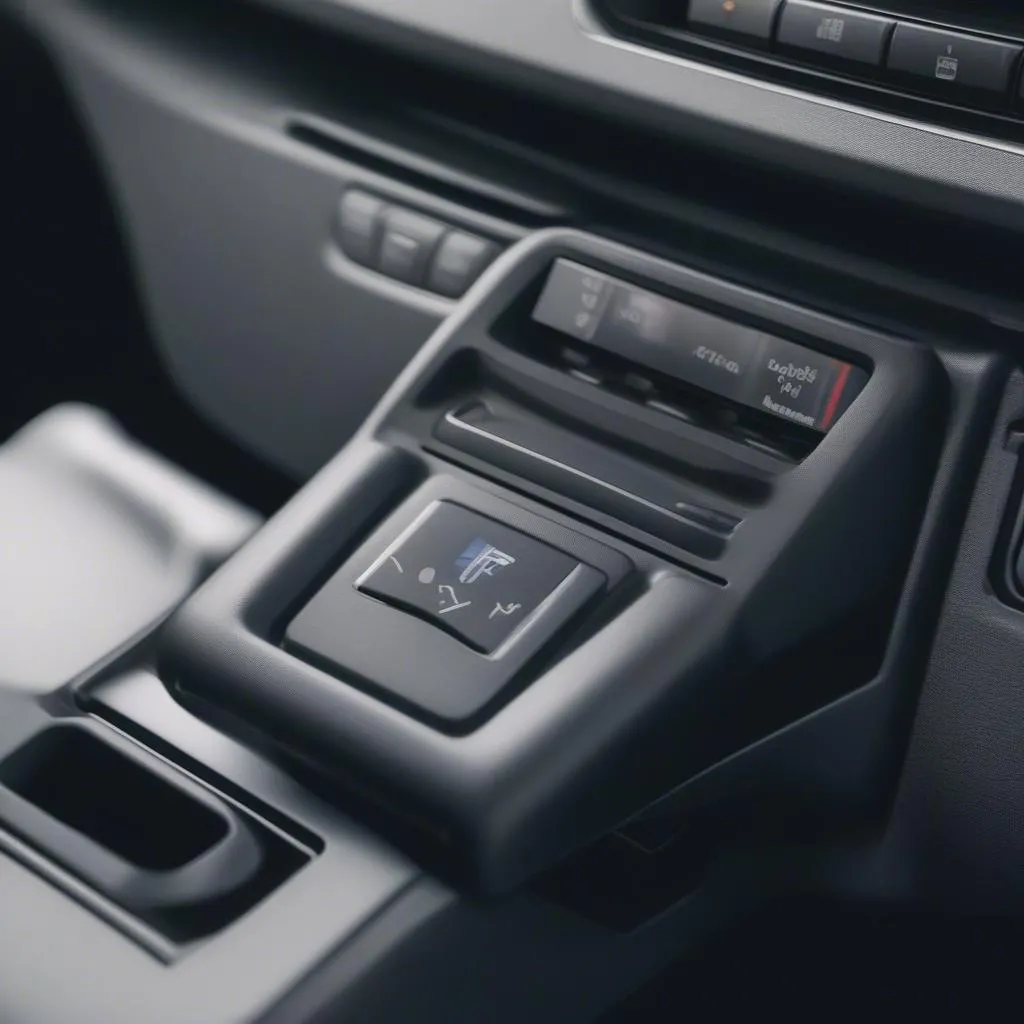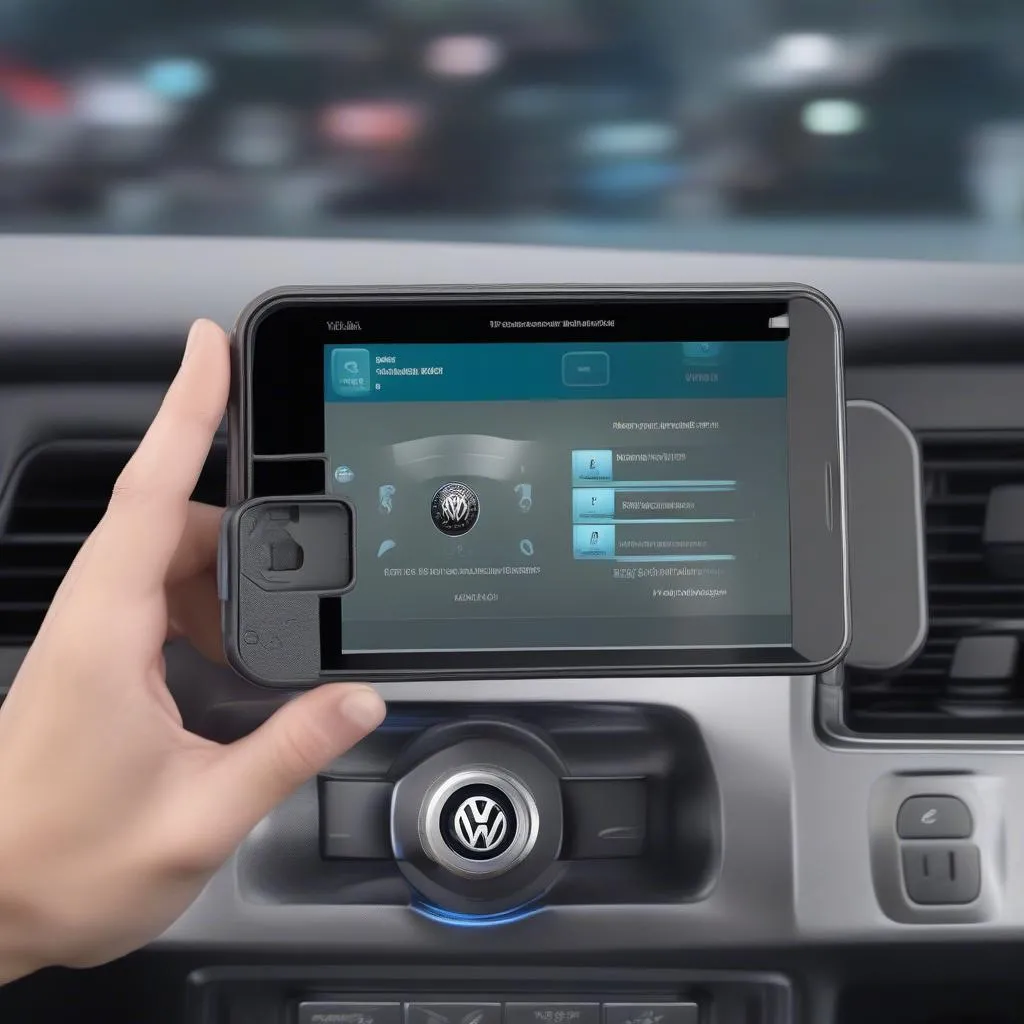Imagine this: You’re driving your trusty VW Golf down a California highway, sunshine glinting off the Pacific, when suddenly the “Check Engine” light throws a wrench into your road trip playlist. Frustrating, right? You pull into a repair shop in San Francisco, the mechanic nonchalantly mentions the OBD port, and you’re left wondering if that’s some new-age tech jargon.
Don’t worry, we’ve all been there! The OBD port, or On-Board Diagnostics port, is your car’s gateway to understanding those cryptic dashboard lights. And locating it in your VW Golf is easier than you think.
Decoding the Mystery of the OBD Port: What it Means for You
Whether you’re a seasoned mechanic or a car enthusiast, understanding the OBD port is crucial.
- For the DIY Mechanic: The OBD port is your best friend. By connecting a diagnostic tool, like the popular Bosch OBD 1110, you can read and clear error codes, monitor engine performance, and even program keys. It’s like having a mini-mechanic in your glove compartment!
- Understanding Your Car’s Health: Just like a doctor uses a stethoscope, the OBD port allows you to listen to your car’s internal whispers. It helps identify potential problems early on, saving you time, money, and potential headaches down the road.
- Unlocking Hidden Potential: For those who love tweaking and tuning their cars, the OBD port is a goldmine. It allows access to engine parameters, enabling performance modifications and customized driving experiences.
Unmasking the OBD Port in Your VW Golf
So, where exactly is this magical port hiding in your VW Golf? Most Golfs, from the classic Golf 4 to the modern marvels, conveniently locate the OBD port under the dashboard, on the driver’s side. It’s typically nestled near the steering column or tucked away behind a small panel.
Still can’t find it? Don’t fret! Each Golf model might have its quirks. Consult your owner’s manual – it usually contains a diagram pointing you to the exact location.
Troubleshooting Common OBD Port Conundrums
Finding the OBD port is usually straightforward, but let’s tackle some common hiccups:
- “My OBD port looks different!” Don’t panic! Older Golfs might have a 20-pin connector instead of the standard 16-pin. You can easily find adapters online or at your local auto parts store. Check out our article on 20-pin OBD connectors for more details.
- “I’ve found the port, but my scanner won’t connect!” This could be due to a few reasons: a blown fuse, a faulty scanner, or even software compatibility issues. For reliable diagnostics, consider using a dedicated European car scanner. We explore the benefits and features of these scanners in our Bosch OBD 1110 Price article.
** obd-port-vw-golf
obd-port-vw-golf
Navigating Your VW Golf’s Digital World
- Exploring Bluetooth OBD Adapters: Imagine reading diagnostic codes from the comfort of your smartphone! Bluetooth OBD adapters, paired with the right app, make this a reality. Learn more about Golf 4 Bluetooth OBD options in our comprehensive guide.
- Delving Deeper with Dealer-Level Scanners: For professional-grade diagnostics, dealer-level scanners offer unparalleled depth and functionality.
** bluetooth-obd-adapter-vw-golf
bluetooth-obd-adapter-vw-golf
Need a Hand? We’re Just a Message Away!
Finding and utilizing your VW Golf’s OBD port doesn’t have to be a daunting task. Armed with the right knowledge and tools, you can unlock a world of information and take control of your car’s health.
Still have questions or need help with diagnostics software installation? Don’t hesitate to reach out to our expert team on WhatsApp at +84767531508. We’re here to help you navigate the exciting world of automotive technology!
Explore More: